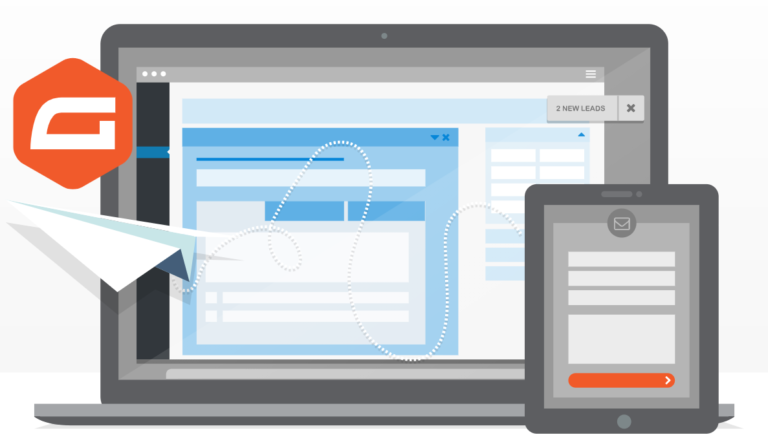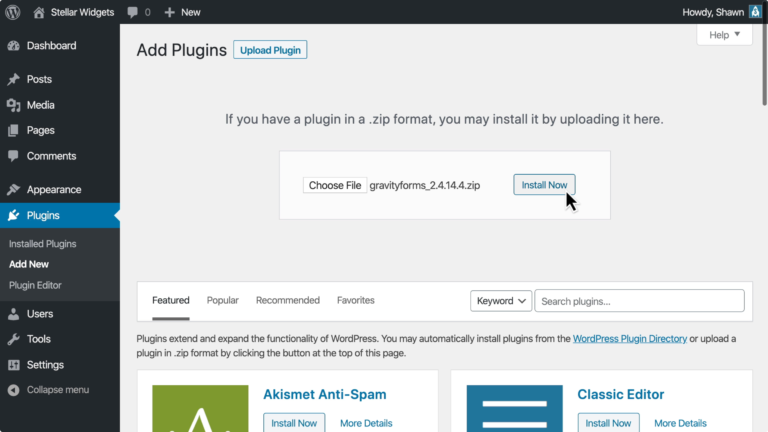Traffic high but conversions low? You’re not alone. This is a problem that many businesses are facing today. If you’re investing in SEO and PPC campaigns to drive traffic to your business website, but failing to see on-site conversions, then you may need to take a different approach. Rather than diving in head first, you may need to spend a bit of time nurturing your leads before they’re ready to make a purchase.
Gravity Forms can help.
What is Gravity Forms?
Gravity Forms is our favourite WordPress contact form plugin that makes it easy to add attractive, engaging capture forms to your WordPress website. There’s a whole host of different types of forms that you can choose to embed into your WordPress site. And more than 30 different form fields, so that you can customise your forms completely. The best part? You don’t need to have any coding experience to develop great-looking captures that make your visitors want to share their details with you. It takes just minutes using their drag-and-drop form builder.
With Gravity Forms, there are templates to help you build:
- Newsletter signups
- Gift certificate order forms
- Webinar and event registrations
- Contact forms
- Quotation requests
- Application forms
- Customer surveys
- Donation forms
What makes Gravity Forms stand out from other WordPress form builder plugins is how easy it is to use conditional logic. This means that you can display – or hide – specific form fields, depending on the actions of each user. This makes it easier than ever to build forms that are personalised to every visitor.
How much does Gravity Forms cost?
There are three pricing tiers for Gravity Forms. The Basic package supports one website and costs $59 per year. This rises to $159 per year (for up to three websites) for the Pro package, and $259 per year (for unlimited websites) for the Elite package. You get the main features in every tier: unlimited forms and entries, conditional logic, multi-page forms, file uploads, and automatic updates with each package.
The main difference – apart from the number of sites supported – is the availability of add-ons. Gravity Forms is an open-source network. There’s a community of developers creating third party add-ons that allow you to do more. Your pricing tier will determine which of these add-ons you’ll have access to.
Although there’s no free version, there is a free demo that can give you a closer look at the features and functionality. And there’s a 30-day risk-free guarantee, offering a 100% refund if you’re not satisfied.
How does Gravity Forms work?
Gravity Forms is built in PHP, and works by bringing together some of the most effective built-in WordPress functions to power its own form building platform. It even uses the same MySQL database as WordPress, although the plugin relies on its own tables to store both forms and completed entries.
How do you integrate Gravity Forms?
- Select a pricing package, sign up, and create a Gravity Forms account
- Download the Gravity Forms zip file
- Log in to your WordPress dashboard
- In WordPress, click Plugins > Add New > Upload Plugin
- Find and select the Gravity Forms file
- Activate the plugin; you should then be able to start building your lead capture forms
How do you create a lead capture form in Gravity Forms?
- In WordPress, click ‘New Form’ in the Forms menu
- Create a name for your form (don’t worry, you can always change this later)
- Select ‘Create Form’
- Choose which fields to add, and click to add the field to the bottom of the form
- Reorder fields as needed using the drag and drop functionality
- Edit fields as needed by hovering over the field and selecting ‘Edit Link’
- Click ‘Update Form’ to save your creation
You can also browse the template library and customise the template for your own audience.
And that’s all there is to it. Once you’ve created your form, don’t forget to embed it into your WordPress site. You can do this by navigating to the page that you want to place your form on, and clicking the ‘Add Form’ option. Choose the saved form you want to embed, and it will automatically be inserted.
Pros and cons of Gravity Forms
Pros
- Integrates with lots of other WordPress plugins, like PayPal, Mailchimp, and Stripe
- Gravity Forms has built a community of third-party developers to create exciting add-ons
- The Conditional Logic feature is a real highlight, and helps create the most personalised forms
- Email notifications mean you never miss a completed form, or a potentially valuable lead
Cons
- Gravity Forms doesn’t work with all WordPress themes
- There’s no live support; it’s all done through tickets (and there’s no support during weekends)
- You need to pay for the higher tier packages to get access to some of the best third-party add-ons
- The UX is starting to become a little outdated, but that doesn’t affect the form functionalities
Gravity Forms alternatives
Gravity Forms is an excellent WordPress form building plugin, and in terms of form customisation, it’s unrivalled. But there are similar tools that can also support your efforts. At WPMaintain, we use a couple of alternatives that you may be interested in. These are useful if you’re looking to venture beyond basic form building, and go a little further into strategic lead generation. Here are two WordPress plugins we love:
OptinMonster
OptinMonster offers similar form-building capabilities, but it’s much more of a broad lead generation tool. While Gravity Forms focuses exclusively on data capture, OptinMonster splits its focus between data capture and user analysis. So if you want to take a more super-charged approach to lead gen, this could be what you’re looking for. Along with pre-made, customisable popup templates, OptinMonster also uses exit intent technology to look at why users leave your site, and offers on-site retargeting.
AWeber
Again, AWeber is a broader lead generation tool. So while it can’t match Gravity Forms in terms of form functionality, it does offer a range of additional features that can help with a lead gen campaign. Along with its browser-ready, mobile responsive capture forms, it also enables you to create emails, landing pages, and push notifications. Probably the best thing about AWeber is that it’s not really a competitor to Gravity Forms. The two integrate very well, so they can be used together for a well-rounded approach.
Gravity Forms summary
If you want to avoid missing out on potential leads, and really get the most from your organic SEO and PPC efforts, then Gravity Forms is what’s going to help you achieve your goals. Give Gravity Forms a try and see just how effective it is at turning casual visitors into valuable prospects. And if you find that Gravity Forms isn’t quite the right WordPress lead generation tool for you, don’t worry. We’ve curated a list of some of our favourite WordPress tools to introduce you to more options for marketing support.










